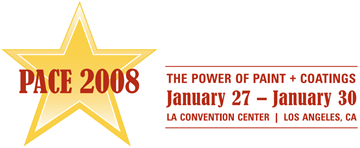Search
Products tagged with 'specifications'
View as
Sort by
Display
per page
Aluminum Corrosion & Corrosion Prevention in a Seacoast Atmospheric Environment
Product Number:
51219-222-SG
Publication Date:
2019
$20.00
An In-Depth Look at Standards Frequently Encountered by Industrial Painters
Product Number:
51218-164-SG
Publication Date:
2018
$20.00
An Introduction To Low Pressure, Ambient Temperature Polyurea Spraying
Product Number:
41211-616-SG
Publication Date:
2011
$20.00
An Overview and Comparison of Surface Cleanliness Standards for the Protective Coatings Industry
Product Number:
41216-965-SG
Publication Date:
2016
$20.00
Are you Ready to Pursue Today’s Greatest Market Opportunity In the Coatings Industry? Millions of Square Feet of Commercial Walls Need Air Barriers. What do you Need to Know to be a Part of this Emerging Market?
Product Number:
41216-957-SG
Publication Date:
2016
$20.00
Beating the Odds for Successful Concrete Flooring Installations
Product Number:
41216-970-SG
Publication Date:
2016
$20.00
Benefits of Using Both SSPC & PDCA Standards in Project Specifications
Product Number:
41208-441-SG
Publication Date:
2008
$20.00
Coating Work by Sub-tier vendors the Good, the Bad and the Smulgy
Product Number:
41216-952-SG
Publication Date:
2016
$20.00
CORROSION POLICY AND OVERSIGHT OFFICE OF THE UNDER SECRETARY OF DEFENSE FOR ACQUISITION, TECHNOLOGY AND LOGISTICS
Product Number:
51218-106-SG
Publication Date:
2018
$20.00
Defining the Inspector’s Role and Responsibility an Essential Element of Successful Coating Project
Product Number:
41210-552-SG
Publication Date:
2010
$20.00












